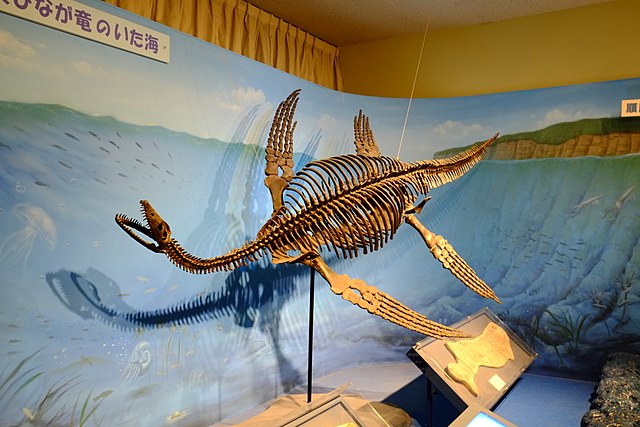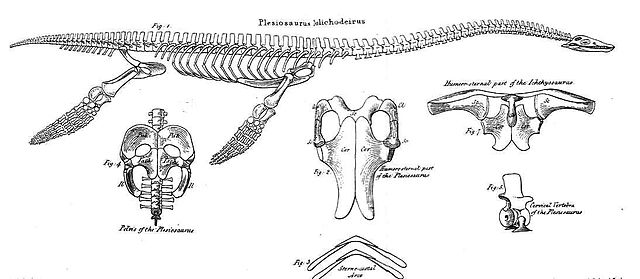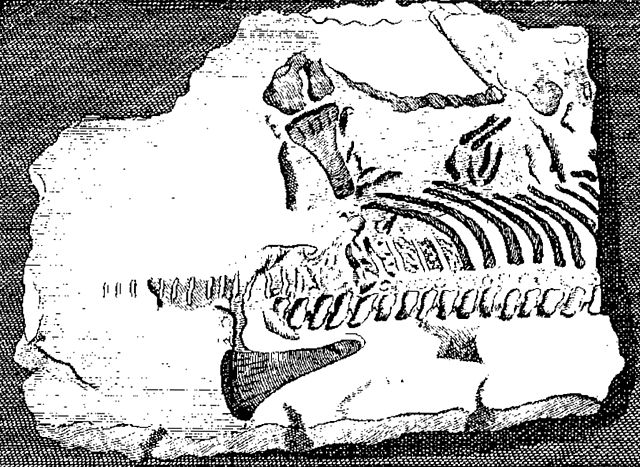Plesiosaurus is a genus of extinct, large marine sauropterygian reptile that lived during the Early Jurassic. It is known by nearly complete skeletons from the Lias of England. It is distinguishable by its small head, long and slender neck, broad turtle-like body, a short tail, and two pairs of large, elongated paddles. It lends its name to the order Plesiosauria, of which it is an early, but fairly typical member. It contains only one species, the type, Plesiosaurus dolichodeirus. Other species once assigned to this genus, including P. brachypterygius, P. guilielmiimperatoris, and P. tournemirensis have been reassigned to new genera, such as Hydrorion, Seeleyosaurus and Occitanosaurus.
Plesiosaurus
Illustration of the skeletal anatomy of a Plesiosaurus dolichodeirus from Conybeare's 1824 paper that described an almost complete plesiosaur skeleton found by Mary Anning in 1823
Specimen referred to Plesiosaurus dolichodeirus (NHMUK OR 36183)
Historically important sculpture (left) in Crystal Palace Park
The Plesiosauria or plesiosaurs are an order or clade of extinct Mesozoic marine reptiles, belonging to the Sauropterygia.
Image: Paleo Hall at HMNS plesiosaur
Image: Peloneustes philarchus Tubingen
First published plesiosaur skeleton, 1719 (specimen NHMUK PV R.1330)
As this illustration shows, Conybeare by 1824 had gained a basically correct understanding of plesiosaur anatomy.







